El autor Michael Tracy, que tiene una casa en Bubión, escribe en ¨Bubión - La historia de un pueblo alpujarreño¨ la historia de este pueblo, que también es la historia de toda la Alta Alpujarra desde el tiempo de los Moros. Utiliza fuentes españoles, ingleses y arábicas en 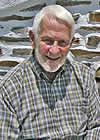 traducción inglesa. Por el tiempo de hoy, se basa en libros de autores locales y de lo que cuentan los vecinos. Escribe con rigor académico pero en un estilo claro y agradable: también españoles pueden aprender de este libro cosas interesantes.
traducción inglesa. Por el tiempo de hoy, se basa en libros de autores locales y de lo que cuentan los vecinos. Escribe con rigor académico pero en un estilo claro y agradable: también españoles pueden aprender de este libro cosas interesantes.
Bubión - the Story of an Alpujarran Village / Bubión - La historia de un pueblo alpujarreño
Michael Tracy wrote ¨Bubión - The story of an Alpujarran village¨ and it is about the people of Bubión. Apart from the investigation work and documentation that Michael Tracy has done about the village, he has talked for many hours with men and women of different generations.
It tells how the countryside and the villages were shaped by Moors over a period of some eight centuries, how they fought a desperate final campaign against the forces of the "Reconquista", and how the villages were repopulated by settlers from other parts of Spain. The book throws new light on events in this area during the Civil War of 1936-39.
In the final section, Tracy describes from personal knowledge local traditions and "fiestas". He concludes with a discussion of challenges facing these villages as they try to adopt to modern ways and the impact of tourism.
Bubión - the Story of an Alpujarran Village (Paperback)
Books by Michael tracy at Hermitagebook
Ildefonso Falcones de Sierra un abogado y escritor 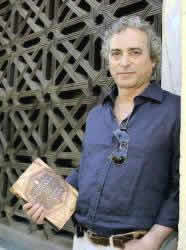 español, ser el autor del éxito de ventas del 2006 La catedral del mar. Su obra prima se convirtió en la novela más leída del 2007 en España. En el 10 de junio de 2009 su segunda obra, La mano de Fátima (La mano de Fátima (Grijalbo) recrea las peripecias de los moriscos en Granada y en Córdoba a lo largo del siglo XVI), que se convirtió rápidamente en un gran éxito vendiendo cincuenta mil ejemplares el día de su estreno.
español, ser el autor del éxito de ventas del 2006 La catedral del mar. Su obra prima se convirtió en la novela más leída del 2007 en España. En el 10 de junio de 2009 su segunda obra, La mano de Fátima (La mano de Fátima (Grijalbo) recrea las peripecias de los moriscos en Granada y en Córdoba a lo largo del siglo XVI), que se convirtió rápidamente en un gran éxito vendiendo cincuenta mil ejemplares el día de su estreno.
Sobre Ildefonso Falcones
La mano de Fátima venderse en linea
Ildefonso Falcones de Sierra being a writer and lawyer, has become known as author of the bestselling The Cathedral of the sea, which became the most widely read novel of 2007 in Spain and sold four million copies worldwide. The Hand of Fatima (recreates the adventures of the Moors in Granada and Cordoba during the sixteenth century) is his second book, published on the10th of June 2009, sold fifty thousand copies on its opening day.
About Ildefonso Falcones
The Hand of Fatima - Hardcover for sale online
Chris Stewart, ex batería del grupo Génesis, que vive retirado desde hace años en un cortijo de 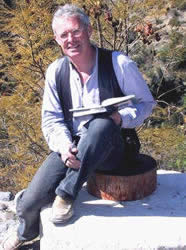 la Alpujarra granadina, recibió ayer tarde el premio La Manzanilla, instituido por un centro cultural del mismo nombre radicado en Órgiva. El autor de Driving over lemons, libro en el que narra sus experiencias alpujarreñas, recibió el grabado que simboliza el galardón de manos de Manuel Gallegos, el pastor que fue juzgado.
la Alpujarra granadina, recibió ayer tarde el premio La Manzanilla, instituido por un centro cultural del mismo nombre radicado en Órgiva. El autor de Driving over lemons, libro en el que narra sus experiencias alpujarreñas, recibió el grabado que simboliza el galardón de manos de Manuel Gallegos, el pastor que fue juzgado.
Casa de libro - 'Entre limones' de Chris Stewart
Chris Stewart, one of the founders and first percussionist of the group Genesis, sold his farm in the south of England and bought a property in the Alpujarras, where he dedicates himself writing books on his life in Spain. Many English have come, following his wake, after reading his books, looking for that strange region, located between the National Park of Sierra Nevada and the Mediterranean Sea, oranges, olive trees, summits, rivers, almond trees, shepherds, small towns, Arab bridges and white cortijos.
Interview with Chris Stewart
Chris Stewart books for sale online
Jean-Christian Spahni un etnólogo y sociólogo suizo editado La Alpujarra, La Andalucía Secreta en 1959 en Francés, se ha reeditado veinticuatro años mas tarde traducido al español. "Aquí, el hombre, mejor que en cualquier otro lugar, ha encontrado su verdadera explicación".
Libros de Jean-Christian Spahni
Jean-Christian Spahni, a Swiss etnólogist and sociologist, published Alpujarra The Secret of Andalusia in 1959 in the french language and reedited and translated it later in Spanish. “Here, the man, better than in any other place, has found his true explanation”.
Gerald Brenan nacido en 1.894 en el seno de una familia inglesa de clase media, con padre militar, sus primeros 8 años residirá en países tan diversos como Sudáfrica, Irlanda o la India. Con 17 años se escapa a viajar con un amigo escritor de 30 años, Hope, andando unos 2.500 Km. durante un año, llegando hasta Bosnia . Después de esta larga caminata vuelve a su país y participa en la 1ª Guerra Mundial.
A principios de 1920 se instala en Yegen durante 14 años en los que tiene una hija, Miranda hija de Juliana y se casa con Gámel. Se instala en Churriana durante la contienda Civil Española y escribe "El laberinto español" unos de los mejores libros sobre España de todos los tiempos según el hispanista Ian Gibson.
Desde el fin de la 2ª Guerra Mundial viaja incesantemente y escribe la Biografía de "San Juan de la Cruz", el libro "Al sur de Granada", sobre sus días en el pueblo alpujarreño, y la "Historia de la literatura española" obra que transmite el entusiasmo del autor al ir descubriendo los autores hispanos.
En 1.968 muere su mujer y conoce a Linda con la que se traslada a Alhaurín el Grande (Málaga) en donde escribe "Pensamientos en la Estación Seca".Muere en este su último pueblo Andaluz cuidado por la fundación que lleva su nombre.
Jonathan Gathorne-Hardy escribió "The Interior Castle. A life of Gerard Brenan" en 1.992 traducido al español recientemente , febrero 2003, y editado por El Aleph Editores S.A. como "Gerald Brenan El Castillo Interior. Biografía". A su vez ha colaborado en el guión de la película 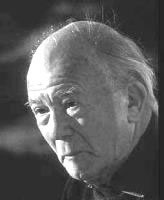 de director Fernando Colomo recientemente estrenada "Al Sur de Granada" en la que se relatala historia de amor entre Juliana y el escritor.
de director Fernando Colomo recientemente estrenada "Al Sur de Granada" en la que se relatala historia de amor entre Juliana y el escritor.
Casa de Libro
Wikipedia (en Español) - Gerald Brenan
Al Sur de Granada de Fernando Colomo
Gerald Brenan was born in 1894 into an English middle class family of military background. During his first 8 years he lived with his family in South Africa, Ireland and India. When he was 17 he ran away from home and walked with his friend and mentor John Hope-Johnstone to 'somewhere in Bosnia', some 2,500 kms! They were aiming for China!
In the early 1920s, after serving in the First World War, Brenan moved himself and his belongings (mostly books) to Yegen, where he lived intermittently for many years, entertained leading members of the 'Bloomsbury Set' (including Lyton Strachey, Dora Carrington and Bertrand Russel), and fathered a daughter (Miranda) with Juliana a young woman from Yegen.
Brenan married an American, Gamel Woolsey, and after the Second World War returned to live in Spain (nearby Málaga) where he wrote other seminal works on the Peninsula; The Spanish Labyrinth, The Face of Spain, The Literature of the Spanish People are the most well known.
2004 has seen the screening of the first Spanish film related to Brenan. Directed by the respected and well known Fernando Colomo, the screenplay is based upon Jonathan Gathorne-Hardy's biography, 'The Interior Castle' and focuses on the relationship between Brenan and the mother (Juliana from Yegen) of his only child Miranda.
Brenan's house in Yegen is still standing and bears a plaque commemorating his stay in the village.
(Text used is taken from Barrhead-scotland.com)
Gerald Brenan books for sale online
About Gerald Brenan
The Bloomsbury Group
Wikipedia (in English) - Gerald Brenan
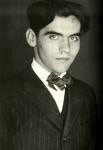 Federico García Lorca (1898-1936) realiza numerosas excursiones en 1926 por las Alpujarras, con Manuel de Falla. La familia adquiere la Huerta de San Vicente, en la vega granadina.
Federico García Lorca (1898-1936) realiza numerosas excursiones en 1926 por las Alpujarras, con Manuel de Falla. La familia adquiere la Huerta de San Vicente, en la vega granadina.
Biografia de Federico García Lorca en Cervantes
Poetas de Federico García Lorca
Huerta de San Vicente
Wikipedia (en Español) - Garcia Lorca
Federico García Lorca (1898-1936) made numerous excursions in 1926 to the Alpujarras with Manuel de Falla. His family acquired the Orchard of San Vicente, in the fertile valley near Granada city. He became a world renown Spanish poet and dramatist, a talented artist and a member of the 'Generation of 1927', a group of writers who advocated avant-gardism in literature. Among García Lorca's best-known plays is Blood Wedding (1933), a story of a bride who runs away with a previous lover, and is subsequently murdered by her husband. After a period of great creative activity, García Lorca was shot by Falangist soldiers in the opening days of the Spanish Civil war. In both his drama and poetry García Lorca balanced between the traditional and the modern, between mythology and contemporary cultural trends.
Wikipedia (in English) - Federico García Lorca
Pedro Antonio de Alarcón nació en Guadix en 1833 y murió en Madrid en 1891. Ingresó en el seminario de su ciudad natal, pero dejó los estudios eclesiásticos por los de leyes, que tampoco terminó. En 1853 se marchó a Madrid donde trató de abrirse camino como escritor, para regresar a Granada donde formó parte del grupo “La Cuerda”, constituido por escritores y artistas conocidos. De nuevo en Madrid, dirigió el periódico antimonárquico y satírico El látigo. Una crisis de conciencia provocó un cambio profundo en sus ideas políticas y religiosas. Intervino en la guerra de África (1859), de la que dejó un valioso testimonio en su "Diario de un testigo de la guerra de África", que le dio fama y dinero. Obras suyas son: La Alpujarra, El Clavo, El Escándalo, La Pródiga, El niño de la bola, El capitán veneno.
Figura clave de la novela española decimonónica, Pedro Antonio de Alarcón escribe de entre sus libros de viaje, "La Alpujarra". Si bien Capileira no fue objeto de su recorrido por la comarca, a comienzos de los 70 del siglo pasado se le dedicó el museo etnológico, que cuenta con diversas piezas relacionadas con el escritor, amén de recrear el ambiente de una casa alpujarreña con sus útiles de labranza y muestras de artesanía de la zona. Los libros de viaje encontraron en su pluma a uno de los mejores maestros del género.
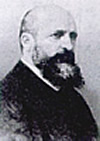 Este relato escrito en 1873, nos sumerge en la historia y en el paisaje de la comarca granadina de Las Alpujarras. Ambos escenarios son apasionantes, y a estos alicientes se une la maestría del autor como narrador, siendo uno de los mejores exponentes del realismo español del siglo XIX.
Este relato escrito en 1873, nos sumerge en la historia y en el paisaje de la comarca granadina de Las Alpujarras. Ambos escenarios son apasionantes, y a estos alicientes se une la maestría del autor como narrador, siendo uno de los mejores exponentes del realismo español del siglo XIX.
Pedro Antonio de Alarcón en Casadellibro
Poetas de Pedro Antonio de Alarcón
Wikipedia (en Español) - Pedro Antonio de Alarcón
Museo en Capileira, Alpujarra granadina
Pedro Antonio de Alarcón was born in Guadix in 1833 and died in Madrid in 1891. He entered the seminary in his hometown, but left his ecclesiastic law studies. In 1853 he moved to Madrid trying to make his way as a writer, to return to Grenada where he formed the group "The chord" consisting of known writers and artists. Back in Madrid, he led the antimonárquico and satirical newspaper El látigo. A crisis of conscience provoked a profound change in his political and religious beliefs. His statement on the war in Africa (1859), left a valuable testimony in his "Diary of a witness of the war in Africa", which gave him fame and money. Other writings are: La Alpujarra, The Nail, The Scandal, The Prodigal Son, Children of the ball, Captain poison.
A key figure of the nineteenth-century Spanish novel writing, Pedro Antonio de Alarcón writes his book of travel, "La Alpujarra". While Capileira was not his objective in the region, he was devoted the ethnological museum there, which has now various pieces related to the writer, in addition to the recreation of the atmosphere of the useful alpujarreña tillage and samples of craft in the valley. This travel book has become valued as one of the best in its genre.
In this story, "La Alpujarra", written in 1873, we are immersed in the history and the landscape of the Granada part of Las Alpujarras, Alpujarra granadina. The scenario proves exciting because the literary inducements proves the mastery of the author as narrator, this being one of the best exponents of Spanish realism of the nineteenth century.
Wikipedia (in English) - Pedro Antonio de Alarcón
Manual Fernández y González nunca fúe admitido en los círculos intelectuales de la época. De carácter irónico y consciente de sus recursos y habilidad para granjearse la aceptación del público y satisfacer las exigencias editoriales, traducía, en son de burla hacia sus detractores, las iniciales M.F.G., grabadas en su coche por un sarcástico.
Destaca en él, como valores literarios, un sentido de la acción y, sobre todo, de la complicidad con el lector en la búsqueda de lo ameno. Entre sus numerosas novelas sobresalen: Martín Gil, El cocinero de Su Majestad y Men Rodríguez de Sanabria. También, España, La Alhambra, La Batalla de Lepanto y El rezo. Sus obras más importantes son: Cid Rodrigo de Vivar, Deudas de la honra y La muerte de Cisneros.
Manuel Fernández y Gonzales Los temas orientales también son tratados por el autor sevillano.
Y para ello no tiene que mirar muy lejos. Bastaba con que sus sentidos
se aplicaran a la herencia musulmana 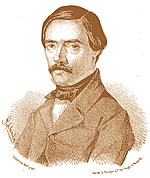 de Andalucía. Andaluces, pues,
fueron muchas veces sus héroes y sus temas: los monfíes de
las Alpujarras, los bandoleros, el feliz recuerdo de la Andalucía
soberana e independiente y la figura de Don Miguel de Mañara.
de Andalucía. Andaluces, pues,
fueron muchas veces sus héroes y sus temas: los monfíes de
las Alpujarras, los bandoleros, el feliz recuerdo de la Andalucía
soberana e independiente y la figura de Don Miguel de Mañara.
Un párrafo del comienzo de su obra Miguel de Mañara, nos da muestras de su riqueza expresiva y su sensibilidad: Era media noche. La luna, esa hermosa y refulgente luna de Andalucía, a la que por su esplendor pudiera llamarse el sol nocturno, abrillantaba la tersa superficie del Guadalquivir… .
Completamente arruinado, con el único reconocimiento oficial del Ateneo de Madrid y la ayuda de sus dos secretarios, Tomás Luceño y Vicente Blasco Ibáñez, murió en Madrid el 6 de Diciembre de 1888.
Wikipedia (en Español) - Manuel Fernández y Gonzales
Manuel Fernández y Gonzales en Mcnbiografias
Manuel Fernández y Gonzales, writer, dramatic author and poet, was born in Seville on December 6, 1821 and died in Madrid on December 6, 1888. He spent his childhood and adolescence in Granada, At the age of twelve he composed verses and at the age of fourteen he published his first book of poetry. Entered the University to be educated in Philosophy and Law, unabated in his literary production. At seventeen he wrote his first novel "Don Pedro de Castilla," and two years later, a drama "The bastard and King."
In 1850 he married and moved to Madrid where he encompassed two literary movements, the romantic style of the first half of the nineteenth century and the realistic novel (second half of the nineteenth century), receiving influences from both, in the themes and forms. If something stands out particularly in the style of Fernandez and Gonzalez, it is the wash of fantasy and imagination that pervades all his works. His ease to create situations, entanglements; moving his characters and letting them disappear into new adventures. His enormous talent and abundant resources and rhetorical arguments led him to summits of success. This also attributed to the Andalusian source, synonymous with wealth and expressive qualities. Manuel Fernández y Gonzales is the most prolific and fertile author of his time.
Eastern subjects were also are treated by the Sevillian author, where his senses were applied to the Muslim inheritance of Andalusia. Andalusians were often the heroes and their subjects: the mountains of the Alpujarras. The brigands, the happy memory of sovereign and independent Andalusia and the figure of Don Miguel de Mañara.
Among his many novels: Bernardo del Carpio, Gil Martin, The cook of his Majesty Rodriguez Sanabria, Spain, the Alhambra, Battle of Lepanto and The Prayer. His most important works include: Cid Rodrigo de Vivar, Debts Honour and Death of Cisneros.
His great successes lead him to Paris, where his novels triumphed gloriously. In his later years his novels were all dedicated to his several secretaries, who'm wrote in shorthand. One of them was Vicente Blasco Ibanez, who later in time would become a great novelist himself.
Manuel Fernández y Gonzales died in great poverty, because of his overly squandering lifestyle. Completely ruined, with only the official recognition of the Ateneo de Madrid, he died in Madrid on December 6, 1888.
One paragraph in the beginning of his book Miguel de Mañara, gives us an idea of his expressive wealth and sensitivity:
It was midnight. The moon, that beautiful brilliant andalusian moon, to which by its splendor might be called the sun of the night, polishing the smooth surface of the Guadalquivir... .


